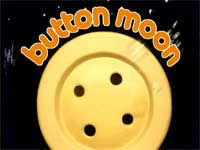Something Joe said in a comment on the
Britannic Orthodox Church? post got me to thinking.
I have heard a number of objections to the Western Rite from various quarters. Some have been from people from traditionally Orthodox countries where the way they phrase their objections has betrayed an ignorance of the history of Orthodoxy outside of their home countries. Others have been from a reactionary "East good: West bad" mentality that seems to exist among some Orthodox groups, where the Divine Liturgy of St John Chrysostom is viewed as having fallen out of Our Lord's back pocket at the Ascension.
However, other concerns raised about the WRite have been more reasoned than this, and do have some merit. I think that Joe's sentiment falls into this category.
It's either a stilted piece of archeology or a byzantinized form of Anglican or RC praxis. At least that's it in simple terms.Before I continue, I must admit now that I don't have any direct experience of worshipping within the WRite in an Orthodox context, and so my knowledge comes mainly from discussing with those who do and from examining the rites myself, and discussing with those who have had a part in adapting them.
I'll take the first objection first. The restoration of the WRite is not
intended to be an exercise in liturgical archaeology. That would be a grave mistake. Liturgy isn't just about words and ceremonial, but about the Faith, spirituality and piety that these rites sustain and are sustained by. The liturgy is only a part of the greater whole and develops and grows naturally within that context. I, too, would be wary of any effort at re-creating the Use of, say, York, as it was 500 years ago, for use in Orthodoxy today. I must admit that I love these forms of worship, but this is an idiosyncrasy of mine. Even while I was salivating over the text of the Old Sarum Rite Mass, translated and superbly produced by Monk Aidan (Keller), (whose excellent
Chant Ordinarium I have), part of me was uncomfortable as I realised that it is something that, sadly, would not be of practical use today. That's the reality of the situation and, while there are a few of us who would be very comfortable in our worship if the Rite of Sarum were in common use, we need to realise that we are a very small minority. It's worth noting, too, (with respect to Monk Aidan, whom I know reads this blog), that no canonical Orthodox jurisdiction has authorised this for use, perhaps for the reasons mentioned above.
Within canonical Orthodoxy, a more organic approach has been taken to this. Instead of resurrecting rites long deceased within the Church, the approach has been to draw into Orthodoxy the liturgucal traditions that are
currently used by Western Christians, which
have developed and grown as living rites within a community of faith; rites which take one of two main formats: those with their roots in the Anglican
Book of Common Prayer and the majority which follow the classical shape of the ancient Gregorian Mass. Of course, the doctrinal defects in these rites have needed to be corrected to restore their suitability for use within Orthodoxy. This has involved changes to the glaringly obvious differences (such as the removal of
filioque), and more subtle changes (such as the restoration of the sung propers which largely fell into disuse after the liturgical actions they were intended to cover were either reduced or removed entirely because of protestant objections to them).
RCs, Anglicans, Methodists and others will be familiar with the classical Gregorian shape of the Eucharist, even if they are unaware of the fact. The Novus Ordo Mass and rites based on it (such as the Methodist Worship Book and Common Worship order one) are all developments of this to one degree or another, and while not suitable for Orthodox worship themselves (for other reasons), mean that this is the basic shape that many Western Christians are familiar with, and have been for centuries. Therefore, an updated form of Sarum would be appropriate, IMO, as would the Gregorian Liturgy itself, as it has lived on to some degree in the Tridentine Mass, still used by some RCs today, and by Canterbury & Continuum Anglicans of the
English Missal tradition. In fact, the Scottish Episcopal Eucharstic liturgy of 1972 (still in use) allows for a celebration very much along the lines of the Gregorian Mass, with a few canonically-permitted adaptations, and from first-hand experience, I can vouch that it is so used in some Anglican churches in Scotland.
With regard to the byzantinisations that may have crept in during the process of correcting the doctrinal forms, I suppose this all depends on one's experience of the Western rite. With regard to the rites used in the Antiochian Western Rite Vicariate, I can't comment much due to having limited experience of them. I'm sure there are others better-placed to comment on those. My knowledge is based on the liturgies of the Russian Church Abroad, where one would be very hard-pressed indeed to find any Byzantine forms. The two main ones are the
English Liturgy and the
Usus Cascadae.
The thing we need to remember is that the Western Rite has its roots in Orthodoxy, and, despite having been outside of Orthodoxy for centuries until 100 or so years ago, is still proving itself to be a valuable part of the Orthodox tradition by the number of people that are brought, by their spiritual formation in the Western Rite, to the point of knocking on Orthodoxy's door and asking to be let in. For the sake of the salvation of souls, I do feel that we need to open this door up much, much more widely.
Just a few thoughts.





